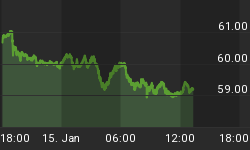For most people, the doctor visit hasn't changed in decades. Same physical waiting rooms, same paper forms to fill out, same slow, expensive tests and marginally-effective, maximally-invasive treatments. But that's about to change, as a wave of new technologies drag medicine into the 21st century. Among the most interesting:
Digitized research. Instead of laboriously searching for medicines in the natural world, today's scientists use algorithms to design thousands of chemicals and “labs on a chip†to test them quickly and accurately. The result: processes that used to take years now take months, weeks, or days, resulting in a tidal wave of powerful new drugs in various stages of development.
Cheap, fast tests. Many of today's medical tests require the culturing of cells in a lab to get enough genetic material to analyze. For example, testing for sepsis (a common, extremely dangerous infection) might take three days and cost $2,000. But several start-ups are introducing advanced molecular diagnostic tools that can test for sepsis in few hours for less than $100. Lots of other tests are being simplified in this way.
Synthetic biology. The emerging ability to mix and match genetic material -- or build it from scratch -- to create new life forms is allowing researchers to, for instance, harness specially-designed bacteria to mass produce next-generation antibiotics, vaccines and cancer drugs.
Genomics for the masses. Sequencing the first human genome required $3 billion and 13 years. 15 years later, the $1,000, 24-hour genome is in sight. The possibilities opened up by widely-available genomics include the ability to determine which cancer drug will work on which cancer, something today's oncologists can only guess at.
Stem cells. Undifferentiated cells that can become anything from neurons to entire new organs were discovered more than three decades ago. But only in the past couple of years has it become possible to make them follow instructions. Scientists are now growing cartilage to repair damaged joints that previously required surgery, while others are creating entire new organs for transplantation.
Trillion-dollar market
Healthcare is one of the two or three biggest global markets, encompassing everything from large pharmaceutical companies and medical device makers to hundreds of start-ups bringing potentially disruptive products to market. So even relatively small niches are potential billion-dollar businesses.
That means a couple of things. First, lots of action. Big companies will be buying out emerging players and new breakthroughs will be announced by labs around the world on a daily basis. So nothing is certain and everything is in flux, which pretty much defines the intellectual challenge of a hot industry. Second, the breakthrough technologies all sound spectacular but, based on the history of previous paradigm shifts, only a tiny minority will ever make it to market. So skepticism is more important here than in normal sectors.
So the best way to approach this kind of industry is to 1) never believe anything you hear until real proof accompanies the wild assertions, 2) diversify across sub-sectors to moderate their volatility, and 3) identify and seek the help of experts. Here's a (very partial) list of biotech related news feeds and newsletters:
FierceBiotech
Prohost Biotechnology
?Prudent Biotech Newsletter
BioInvest
BioPortfolio
Biotech Newsletters - Stockfocus.com
Currin Biotech Investment Newsletter
Biotechnology News - ScienceDaily
And a few representative articles:
Next-Generation Genomics, Precision Medicine to Top $100B
Luminex to Acquire Nanosphere for 69% premium to previous day's close
A Pure Regenerative Medicine Play
Silicon Valley elites look to live forever
*Most of these stocks will tank in the coming equities bear market. At the bottom -- after the crash -- potential ten-baggers will be common. So get up to speed on them now. For the previous article in this series, see After The Crash, Part 1: Solar Stocks
















